
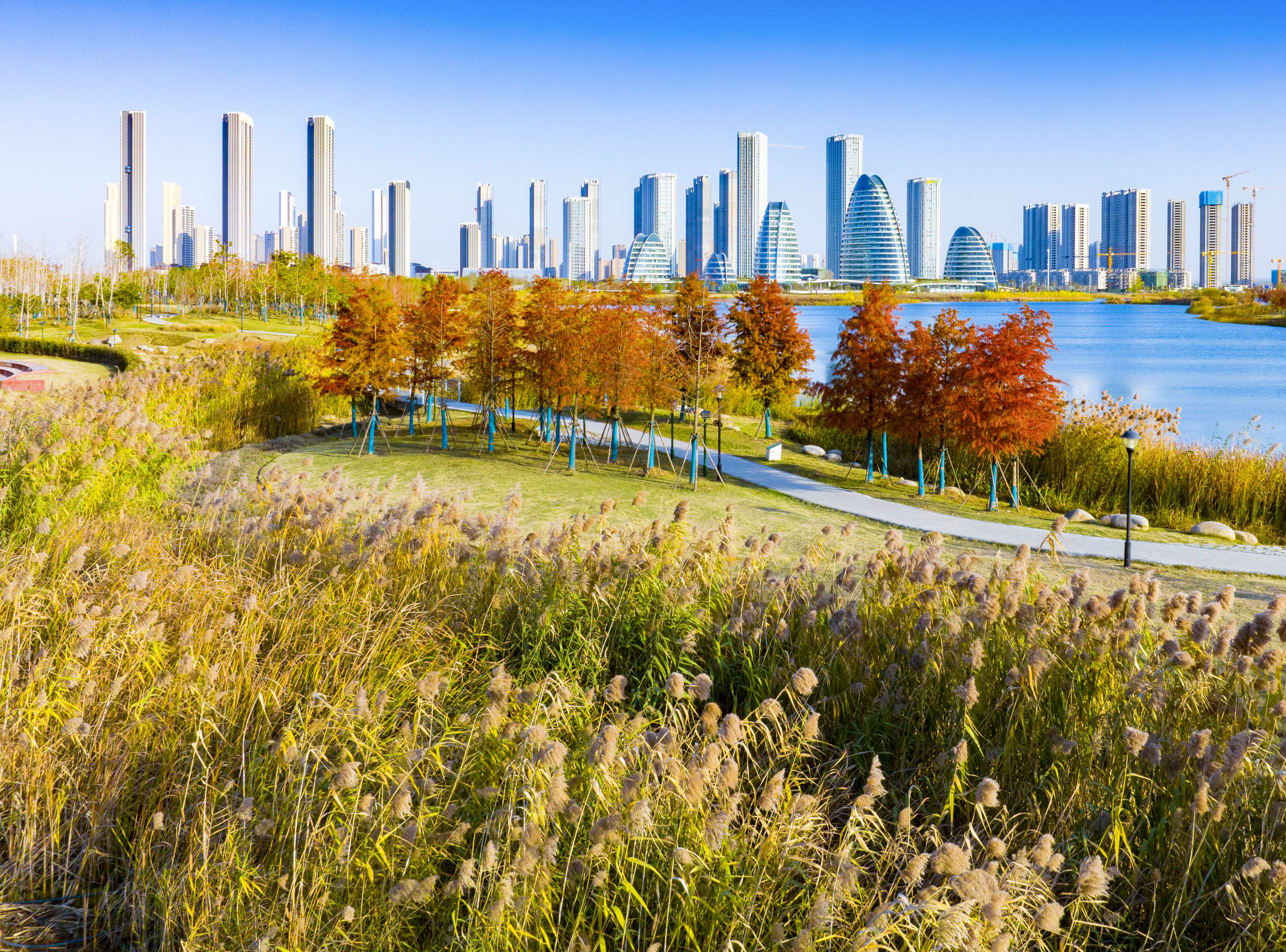
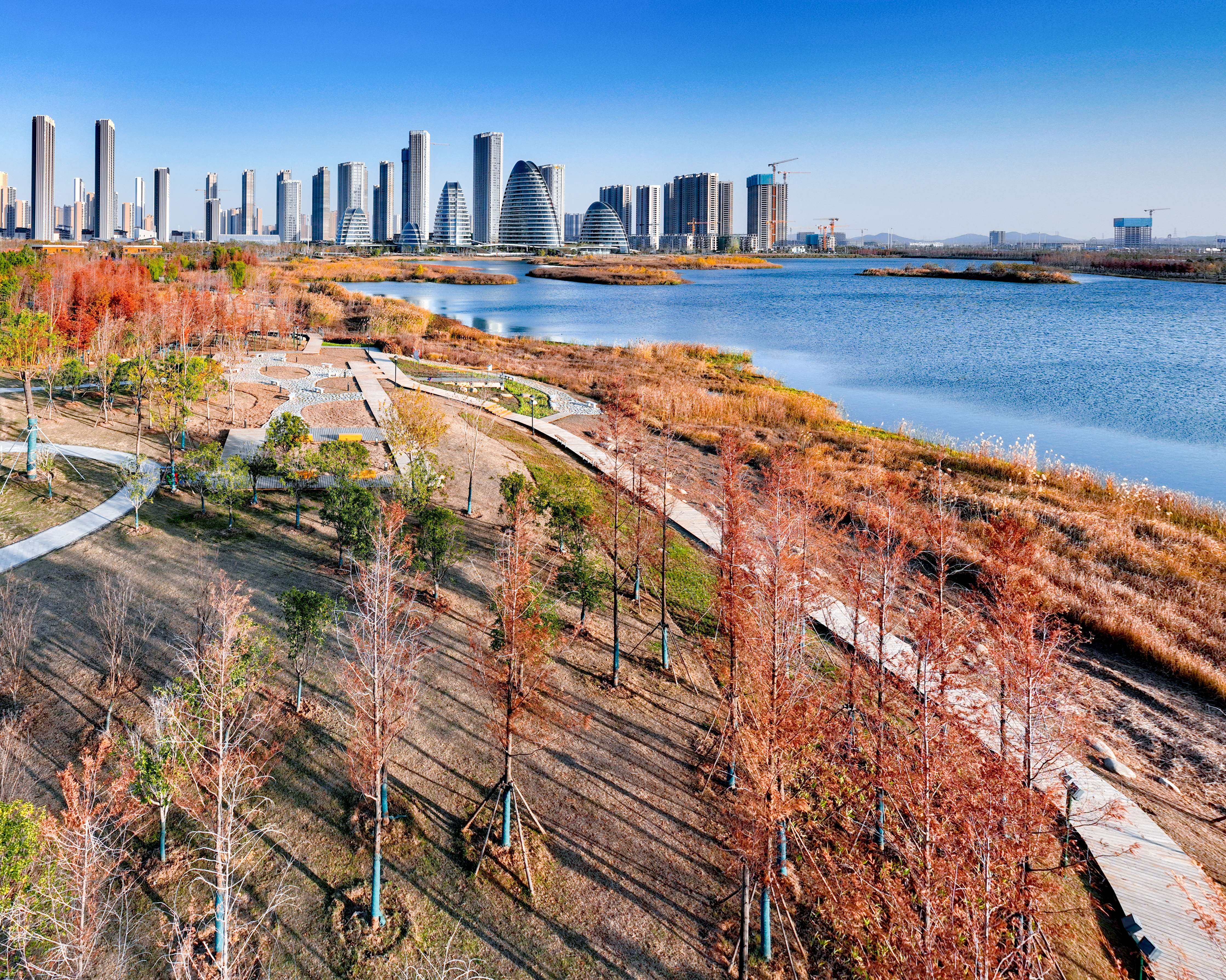
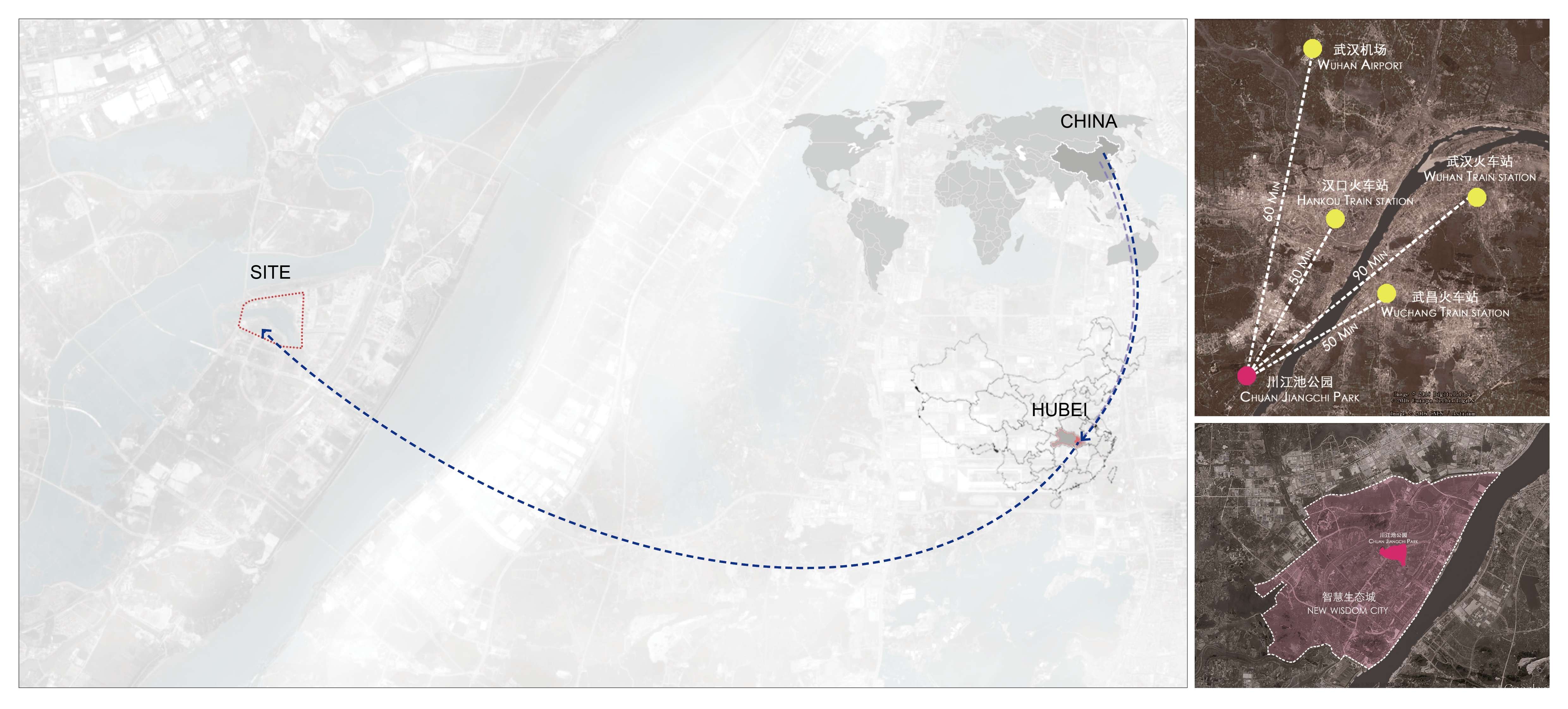
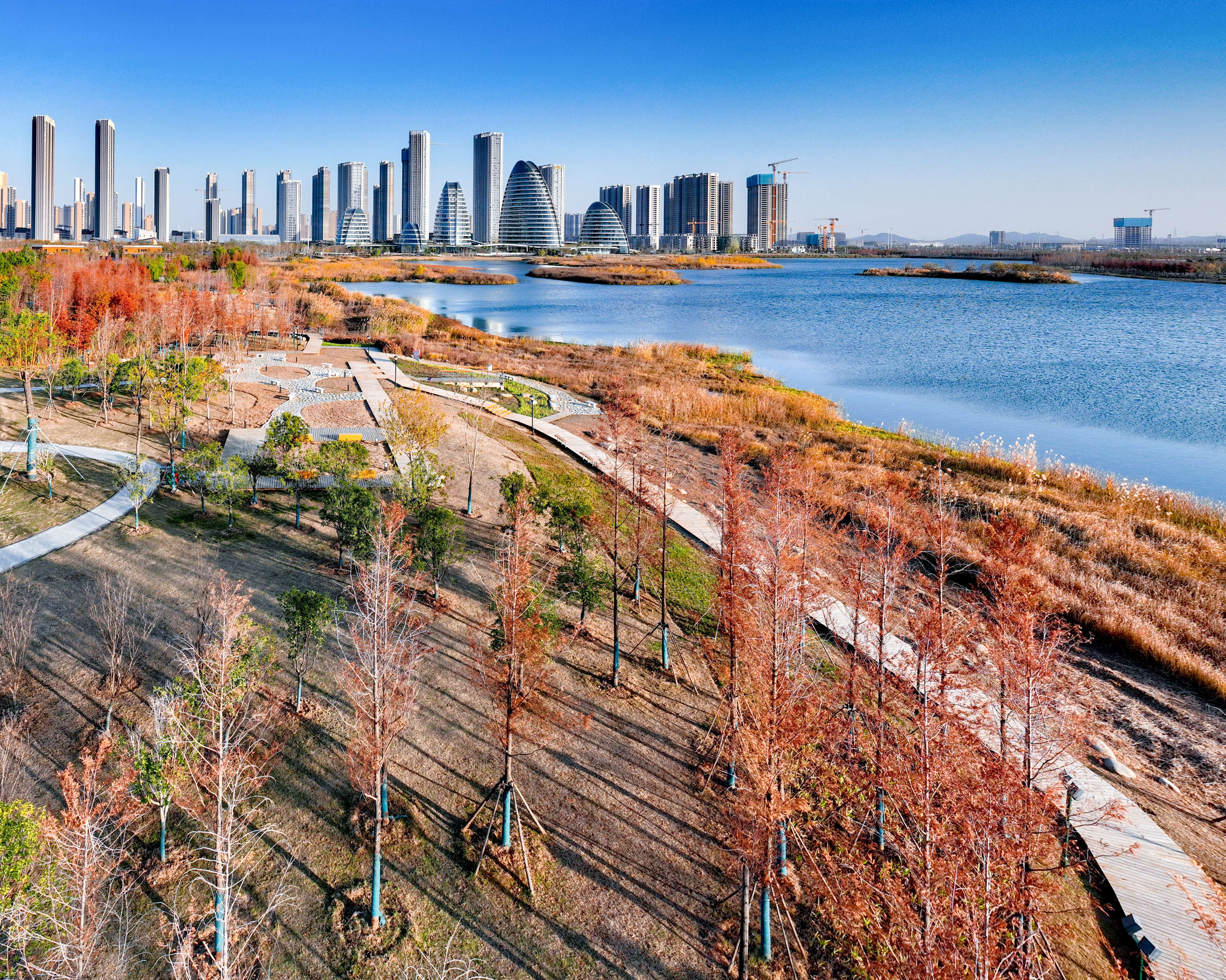
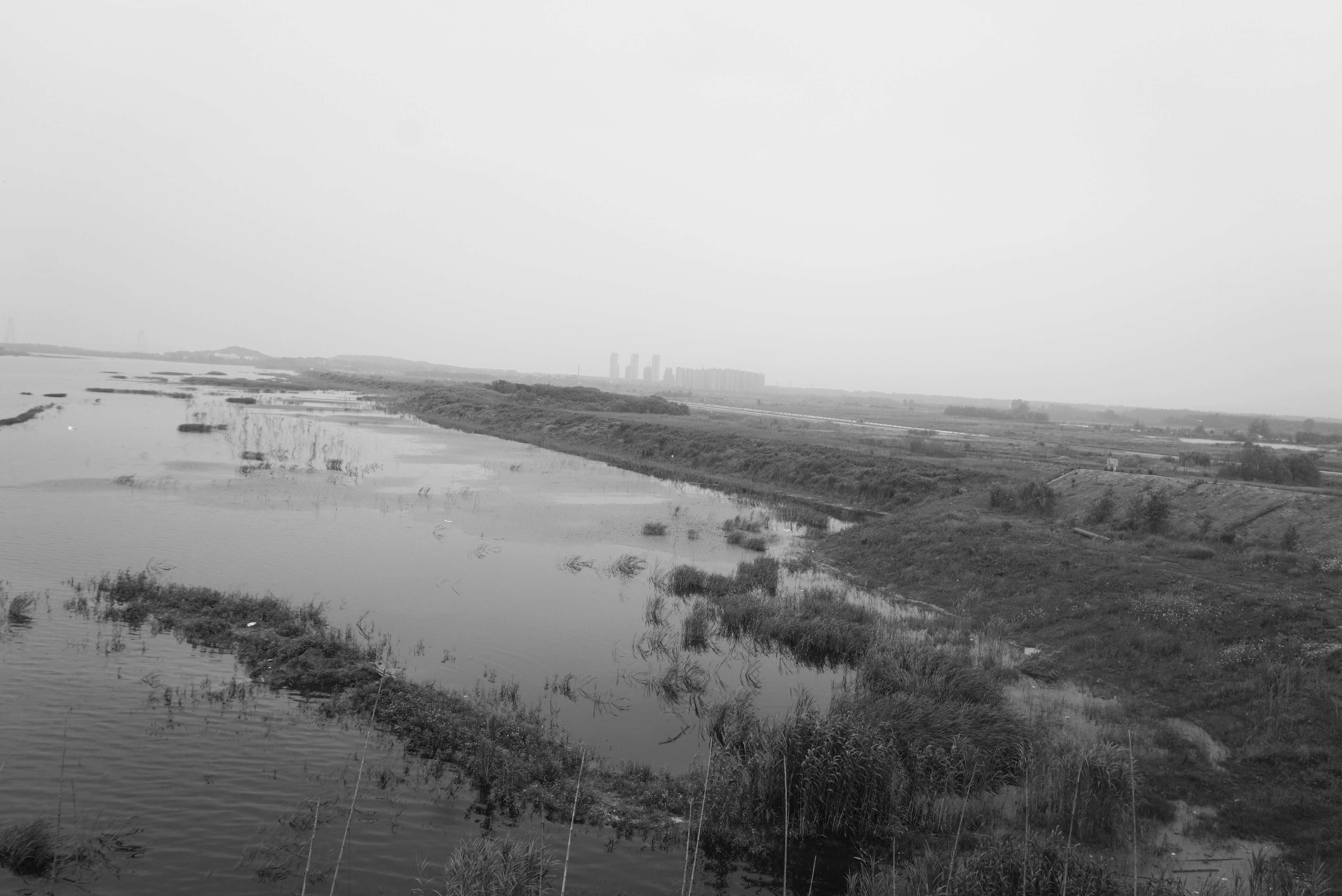
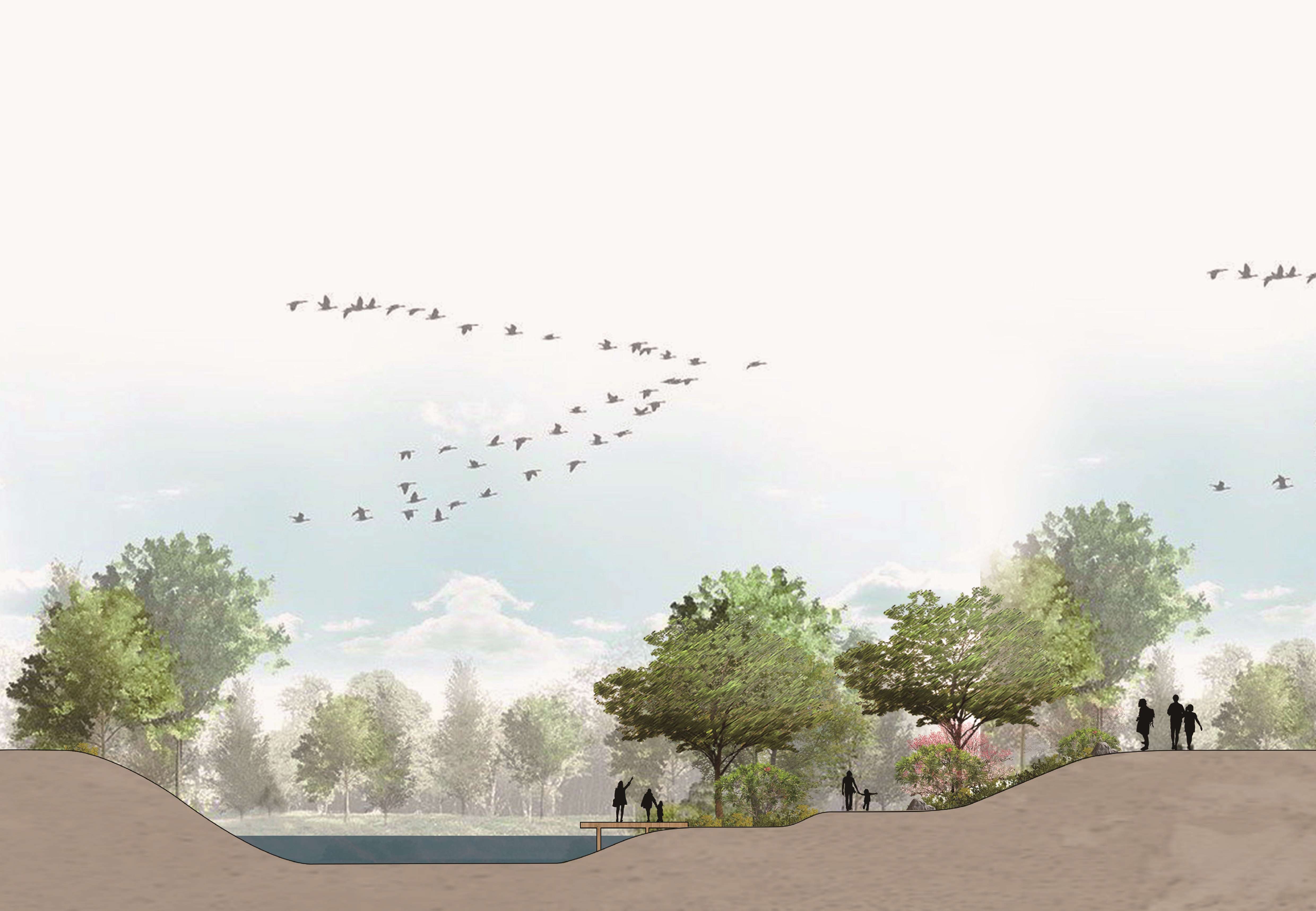
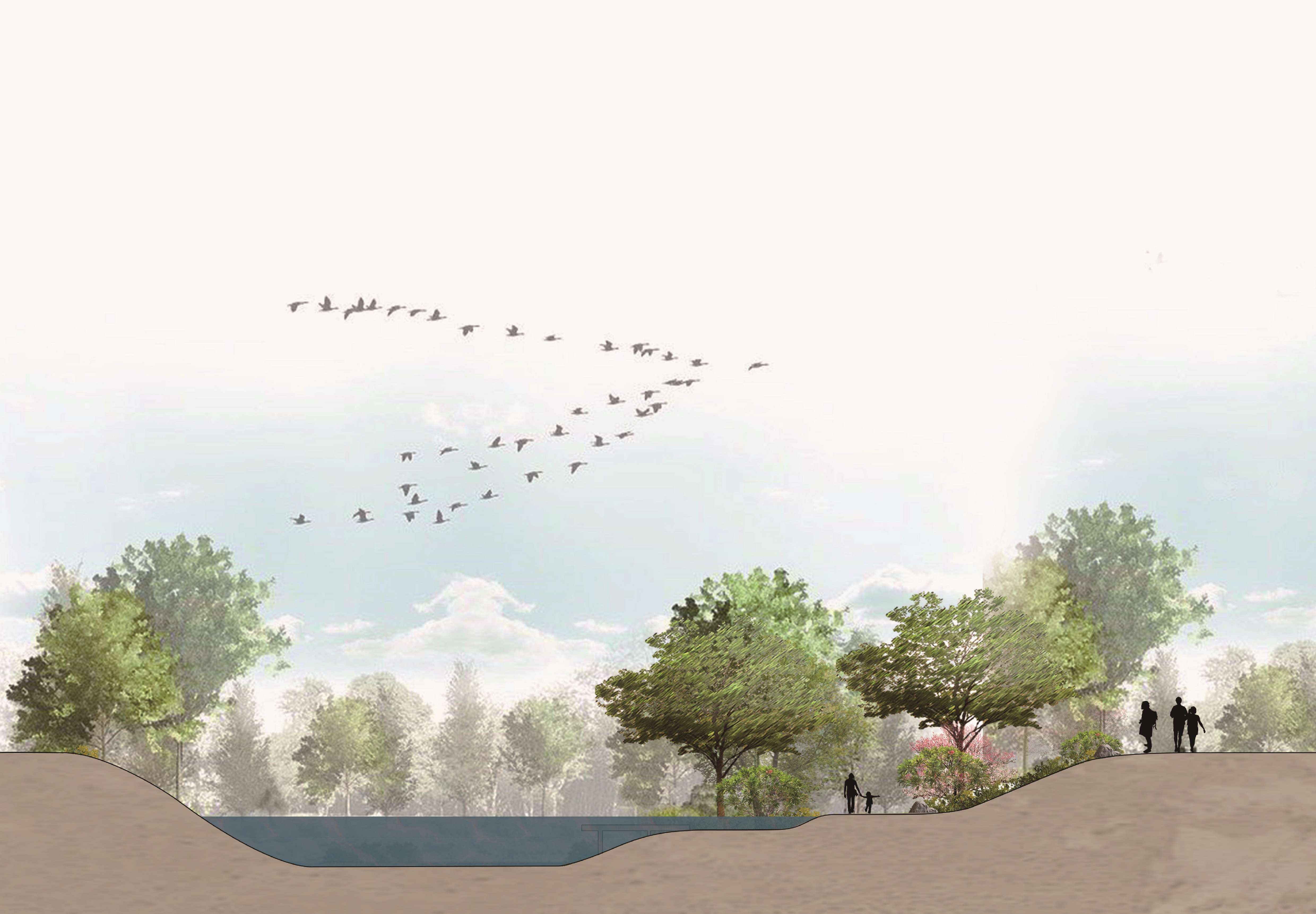
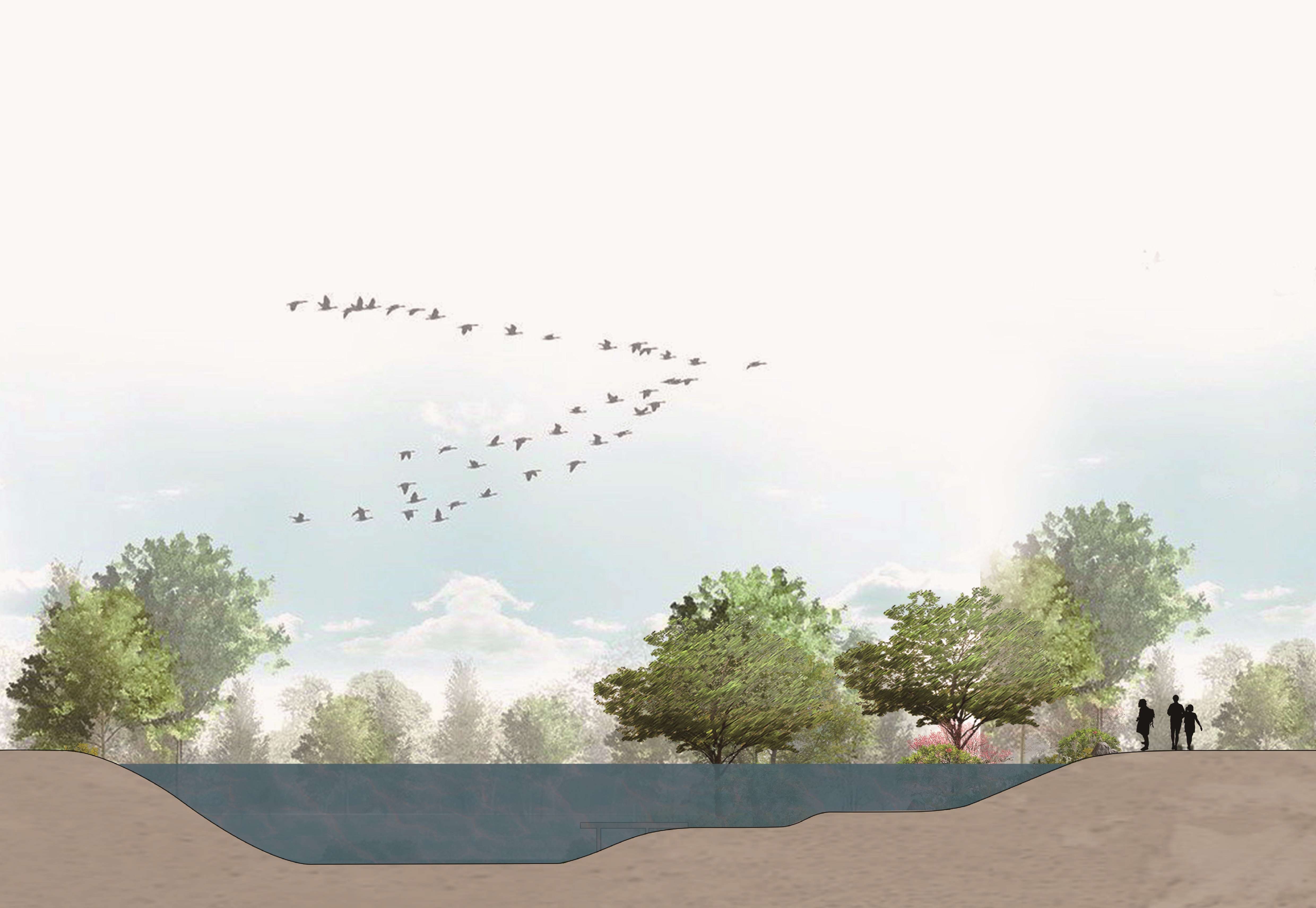
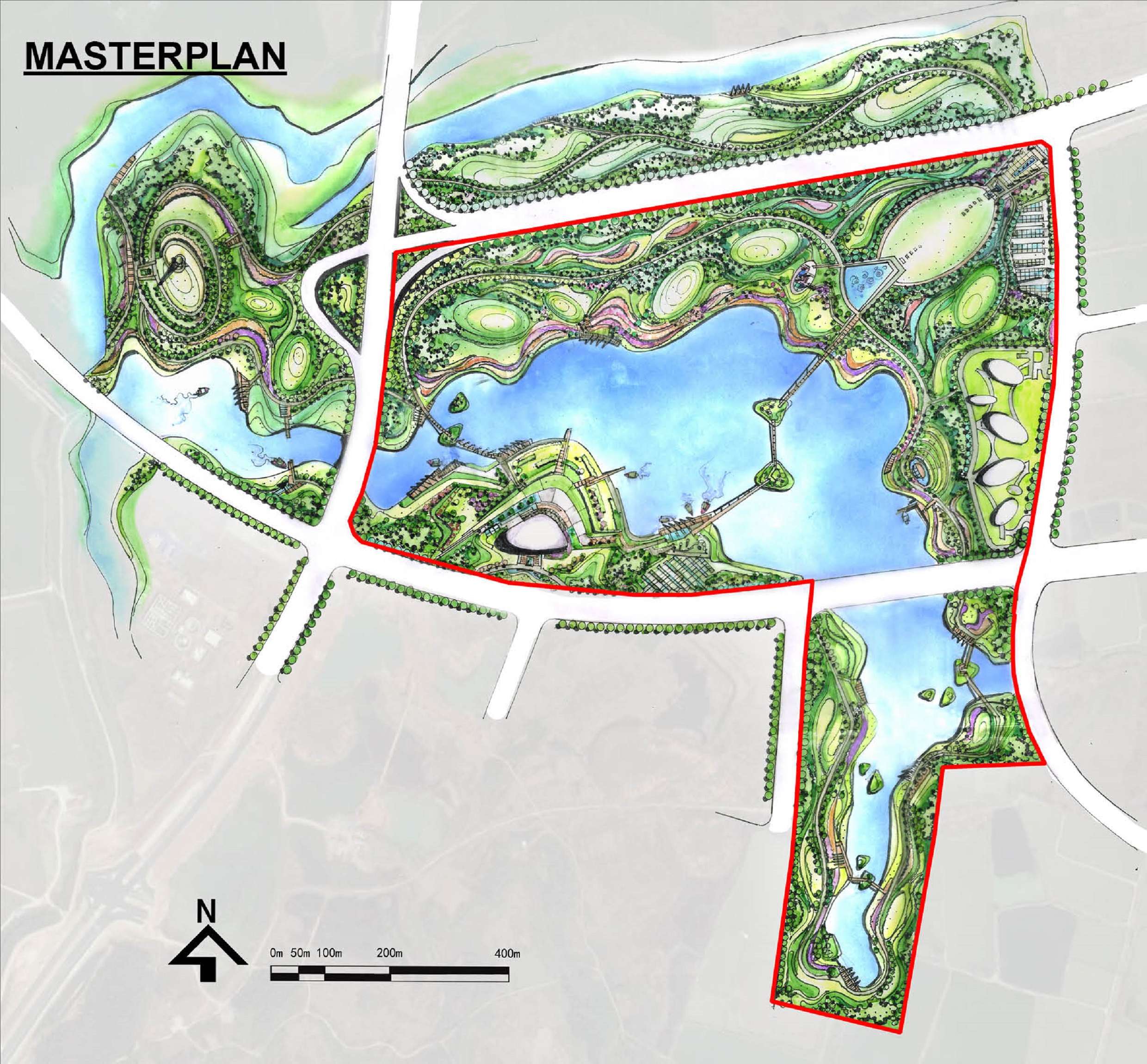
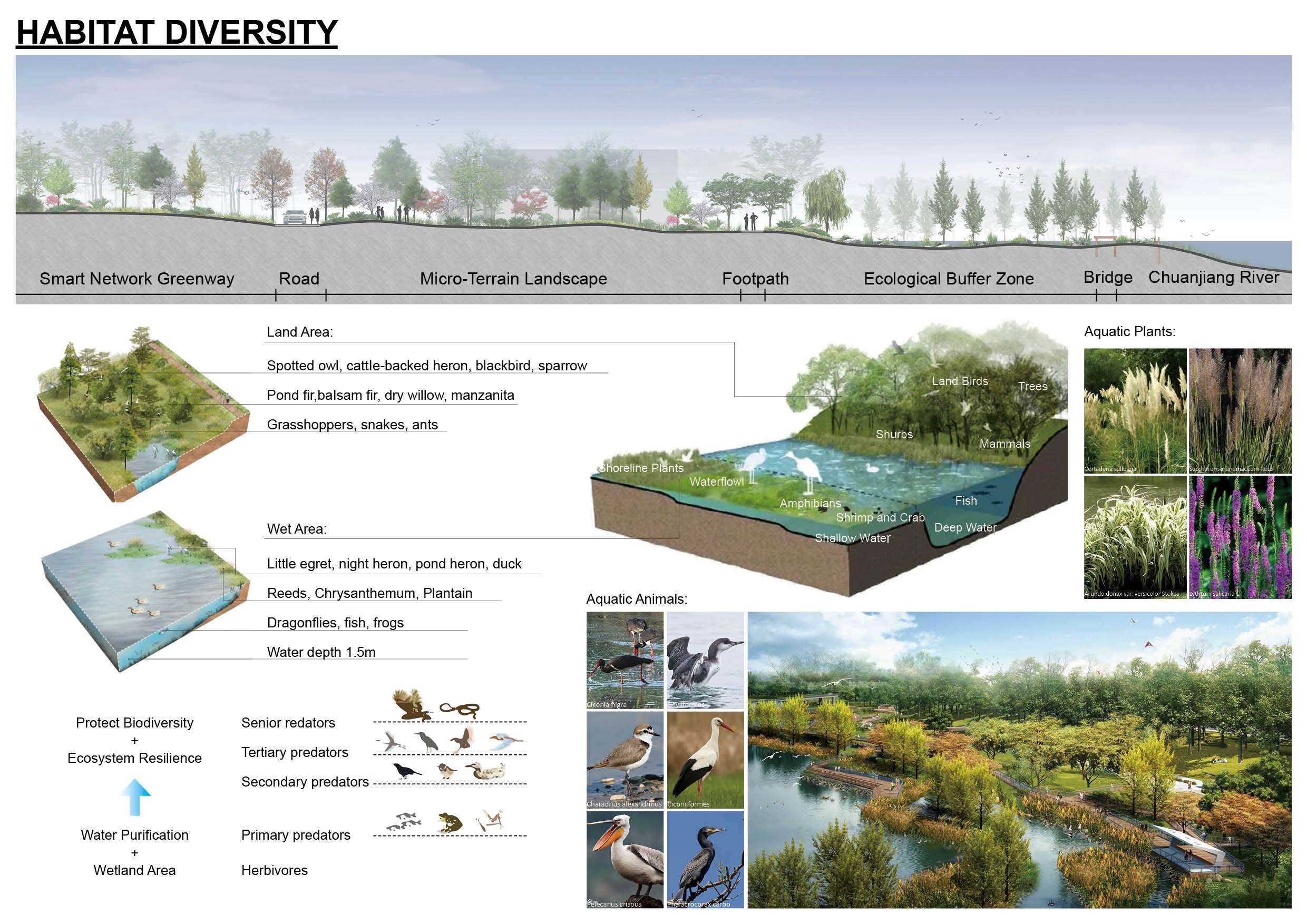
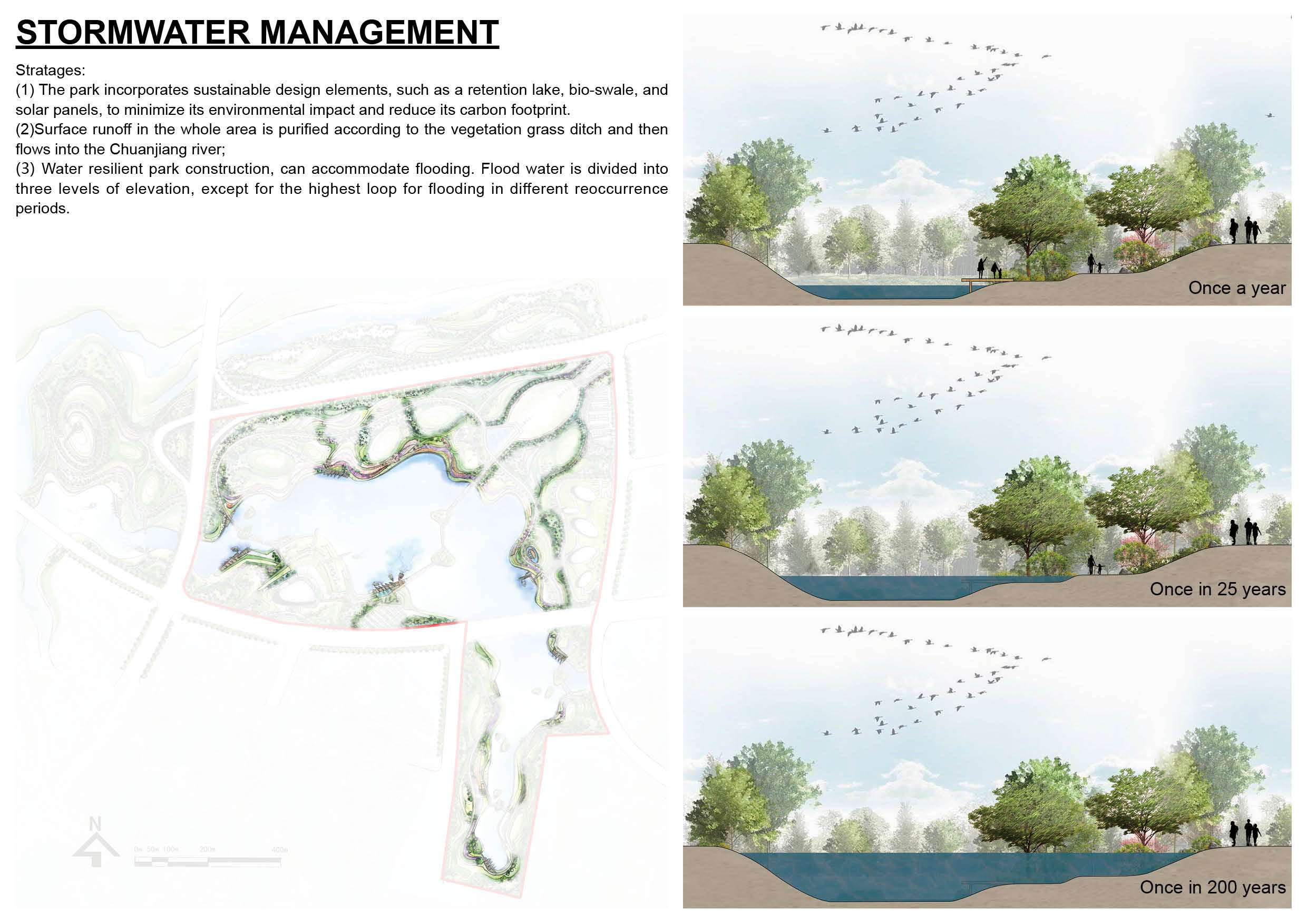
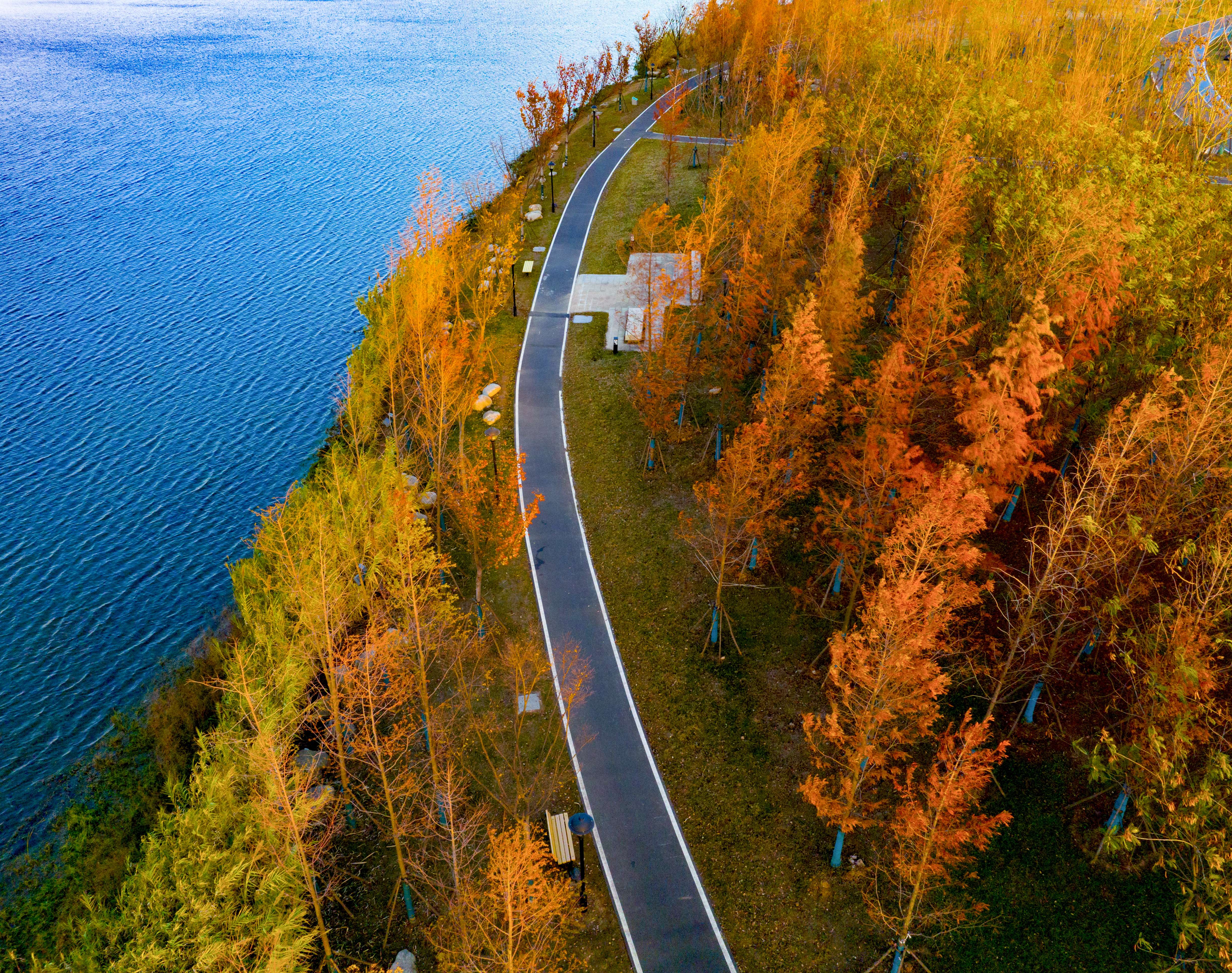
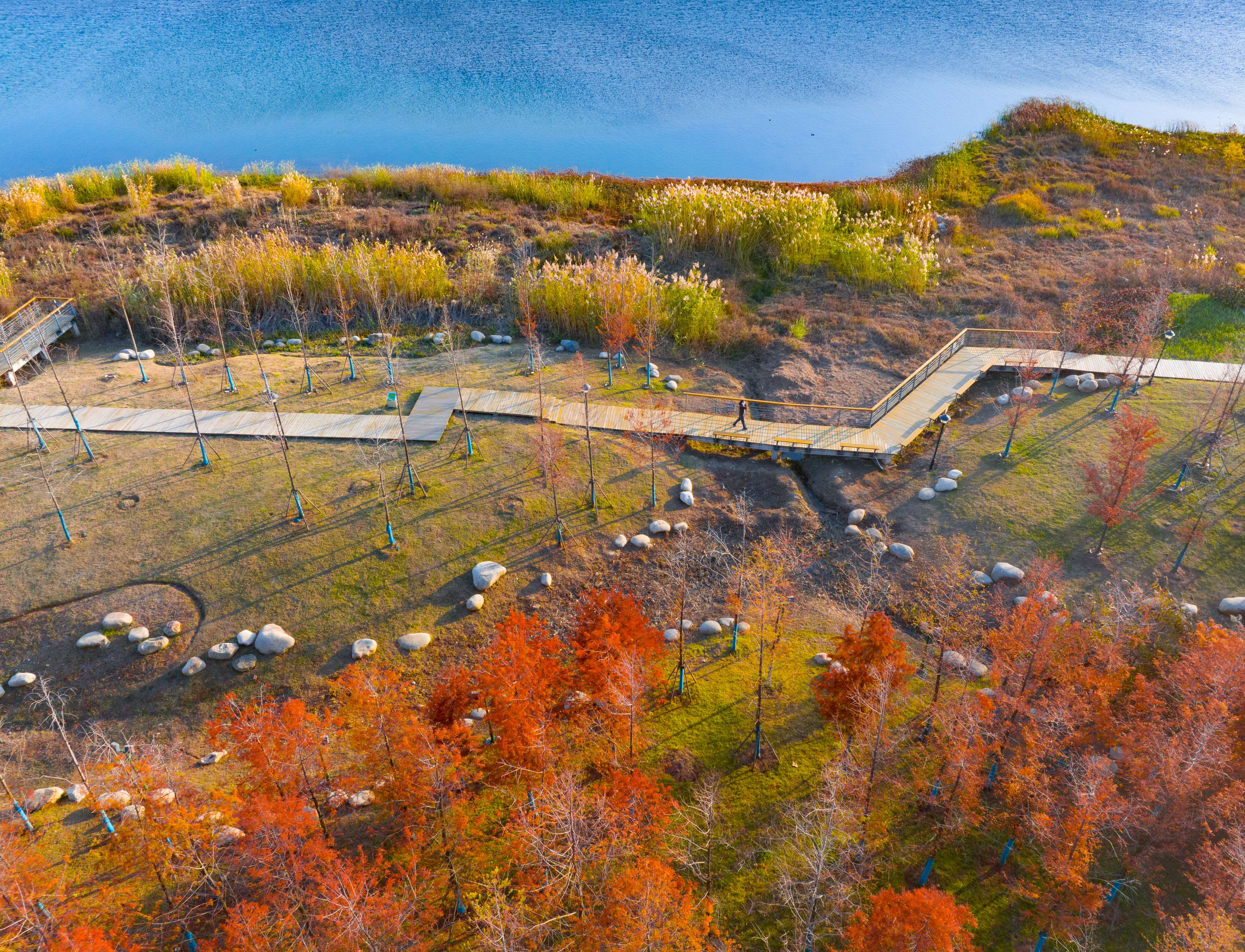
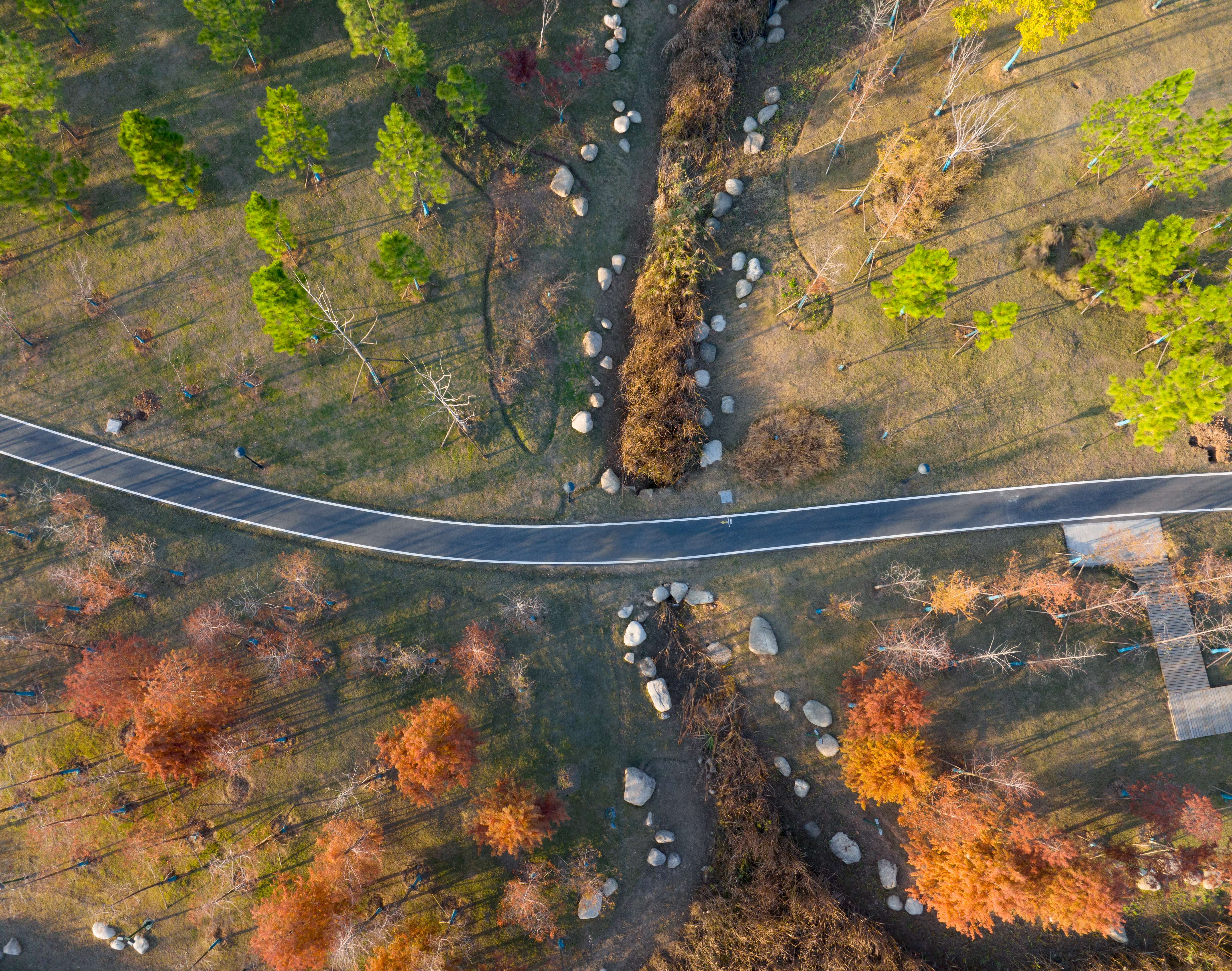
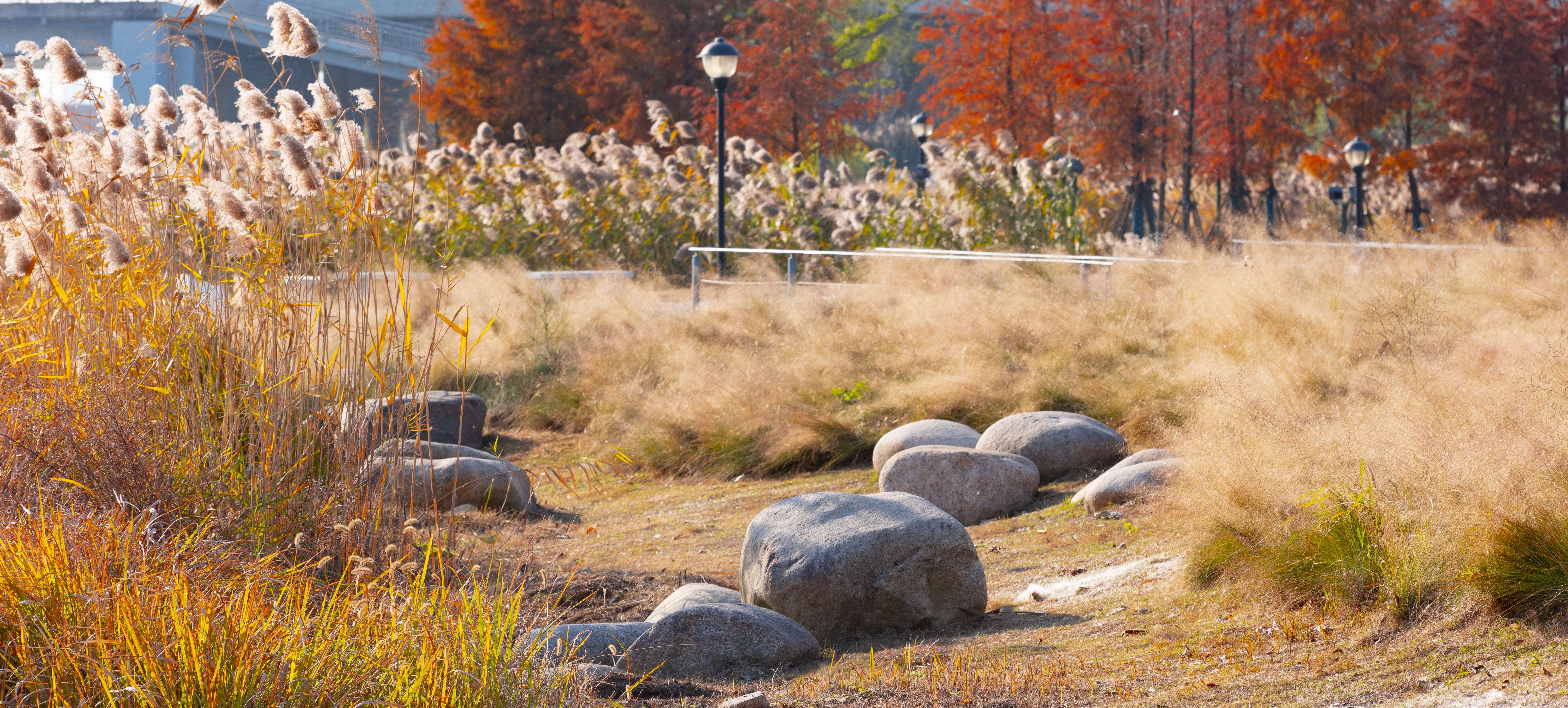
WETLAND PARK DESIGN BASED ON FLOOD RESILIENCE AND ECOLOGICAL INTELLIGENCE
WETLAND PARK DESIGN BASED ON FLOOD RESILIENCE AND ECOLOGICAL INTELLIGENCE
WETLAND PARK DESIGN BASED ON FLOOD RESILIENCE AND ECOLOGICAL INTELLIGENCE
The Wetland Park project is located in Hubei Province, central China. Its main innovation lies in designing a resilient space that can both discharge rain and store floods, purifying rainwater while avoiding flooding to prevent disasters. Designers have protected and restored the aquatic ecosystem, consisting of rivers, wetlands, detention ponds, bio-swales and ditches. By using natural drainage systems such as ecological ditches and low-impact development facilities, the designers promote natural accumulation, infiltration, purification, and clean water discharge of rainwater to achieve the park's climate adaptation resilience and rainwater purification functions.
All of these measures are perfectly integrated with the park's recreational, camping, children's playground, adult fitness, and ecological education functions. The parking lot meets the charging needs of new energy vehicles, and the ground uses recycled synthetic materials made of concrete. The sewage discharge from the toilets is also treated and purified on-site. These measures improve the natural recovery ability of the park's ecosystem, maintain the ecological functions of the city, balance the relationship between humans and nature, and provide ecological and scientific education to visitors. These measures embody the ecological wisdom in park design.
Design Ideas
The project is located in Wuhan Economic Development Zone, Hubei Province, and is the core area of the Intelligent Eco-City, bordered by Chuanjiang river Second Road to the east, Chuanjiang river Road to the south, Tongshunhe Avenue to the west, and Managed Hill Road to the north, and close to the Three Kingdoms Culture Important Node Managed Hill and Dongjing River. It is the ecological demonstration area, wisdom demonstration area and greenway demonstration area of the wisdom ecological city. The design area is about 753,000 square meters, half of which is wetland.
The main content of the project is to protect water ecological sensitive areas such as rivers, lakes, wetlands, ponds and ditches, to give priority to the use of natural drainage systems and low impact development facilities, to achieve natural accumulation, natural infiltration, natural purification and sustainable water cycle of rainwater, to improve the natural restoration capacity of water ecosystems, to maintain good ecological functions of the city, to coordinate the balanced relationship between humans and nature and to fill the missing natural science and technology function.
Design Strategy-NbS
It is necessary to give priority to nature, respect nature, strengthen the protection of natural resources, deal with the waste in the site according to local conditions, vigorously promote the protection and restoration of the ecosystem, comprehensively grasp the greening work, not to make a big opening, retain the wild features of the urban-rural combination, and create an ecological mudflat with natural wildness different from the urban landscape.
How to meet the ecological and environmental protection needs under the environmental protection inspectors, deal with the garbage in the site, and improve the flood control treatment. How to ensure the seasonal water level of the site on the re-greening of plants, the ecological environment of the adaptive impact.
• Incorporate Sustainable Design
Incorporate sustainable design principles to minimize the park's impact on the environment. This can include using renewable energy sources, conserving water, reducing waste, and using locally sourced materials.
Use Renewable Energy Sources: Incorporate renewable energy sources, such as solar panels or wind turbines, to power park facilities and amenities. This will reduce reliance on non-renewable energy sources and reduce carbon emissions.
Conserve Water: Use low-flow fixtures, rainwater harvesting systems, and drought-tolerant landscaping to reduce water usage. This will conserve water resources and reduce the demand on the local water supply.
Minimize Waste: Use materials that are durable and long-lasting, and design park amenities to be easily disassembled and recycled at the end of their useful life. This will reduce the amount of waste generated by park construction and maintenance.
Use Sustainable Materials: Use sustainable materials such as recycled materials, reclaimed wood, and low-maintenance materials like composite decking or permeable pavers. This reduces the environmental impact of park construction and maintenance.
• Stormwater Management
Consider the potential impacts of climate change on the park and design it to be resilient to those impacts. This can include designing for flooding, extreme heat, and drought. Stormwater runoff is a major environmental issue that can cause flooding, erosion, and pollution of local waterways. Sustainable stormwater management practices, such as bio-swales, detention ponds, and retention ponds, have become increasingly popular as a way to minimize the environmental impact of runoff and protect local water resources.
Bio-Swale: A bio-swale is a vegetated channel that is designed to capture and treat stormwater runoff. The channel is typically filled with vegetation and soil, which helps to slow down the flow of water and absorb pollutants. As water flows through the bio-swale, it is filtered and treated by the vegetation and soil, reducing the amount of pollutants that reach local waterways.
Bio-swales are often used in urban environments, where impervious surfaces, such as roads and parking lots, prevent water from infiltrating the ground. By capturing and treating stormwater runoff, bio-swales help to minimize the environmental impact of runoff and reduce the risk of flooding.
Detention Pond: A detention pond is a man-made basin that is designed to collect and temporarily store stormwater runoff. The pond is typically excavated to a depth that allows it to hold a certain volume of water, which is slowly released over time. This slow release of water helps to minimize the impact of runoff on local waterways and reduce the risk of flooding.
Detention ponds are often used in areas where there is limited space for other stormwater management practices, such as bio-swales or retention ponds. They are typically designed to be aesthetically pleasing, with vegetation and landscaping used to blend the pond into the surrounding environment.
Retention Pond: A retention pond is similar to a detention pond in that it is designed to collect and store stormwater runoff. However, unlike a detention pond, a retention pond is designed to hold water permanently. The pond is typically excavated to a depth that allows it to hold a certain volume of water, which is maintained over time.
Retention ponds are often used in areas where there is a need to maintain a certain level of water in the surrounding environment, such as wetlands or rivers. They can also be used to improve water quality, as the pond provides an opportunity for pollutants to settle out of the water before it reaches local waterways.
In summary, boardwalks, bio-swales, retention lakes, and detention ponds are all important components of sustainable park design. Boardwalks provide a safe and accessible space for visitors to enjoy the natural environment, while bio-swales, retention lakes, and detention ponds help to minimize the environmental impact of stormwater runoff and protect local water resources. By incorporating these sustainable practices into park design, we can create a more environmentally friendly and resilient urban environment.
• The combination of ecological wisdom and flood parks
Combining ecological wisdom and floodable park design requires a holistic approach that takes into account the complex relationships between natural and human-made systems.
Use natural processes to manage flooding: Rather than relying solely on concrete or steel flood control measures, consider using natural processes to manage floodwater. This could include creating wetlands or bioswales that can absorb and filter water, or designing the park in a way that allows water to flow naturally through the landscape.
Incorporate sustainable materials and practices: Use sustainable materials in the park design, such as recycled or locally sourced materials. Use practices that promote resource conservation and waste reduction, such as rainwater harvesting, composting, or renewable energy sources.
Protect and enhance biodiversity: Incorporate plant and animal species that are native to the area and support local biodiversity. Design the park in a way that creates habitats for different species, such as providing nesting sites for birds or creating areas for pollinators.
Educate and engage the community: Encourage community involvement and engagement in the park design and management process. Create opportunities for educational programming and outreach to promote ecological literacy and encourage sustainable behaviors.
Prioritize resilience and adaptability: Design the park with resilience and adaptability in mind, so that it can withstand and recover from extreme weather events and other environmental stressors. Incorporate features such as flood-resistant infrastructure, green roofs, or permeable pavements.
By integrating ecological wisdom into the design and management of a floodable park, it is possible to create a space that not only provides recreational and aesthetic benefits but also supports local biodiversity and contributes to the overall health and well-being of the surrounding ecosystem.
LA's names who worked on the project :ZHU LIQING,LIU YONG,JI SHAN,SONG BENYUN
Architecture Firm :GUANGZHOU LANDSCAPE BUILDING DESIG
Civil Structure Engineer :YU SHINAN
Quantity Surveyor :LI RUOXUE
Lighting Designer :WANG GONG
Contributors :Wuhang Weme;LIU MOUBING,XIAYANG,XUN LI,DU FANG,ZHENG QINGYI,XIELIYI,FANG LIQIONG
